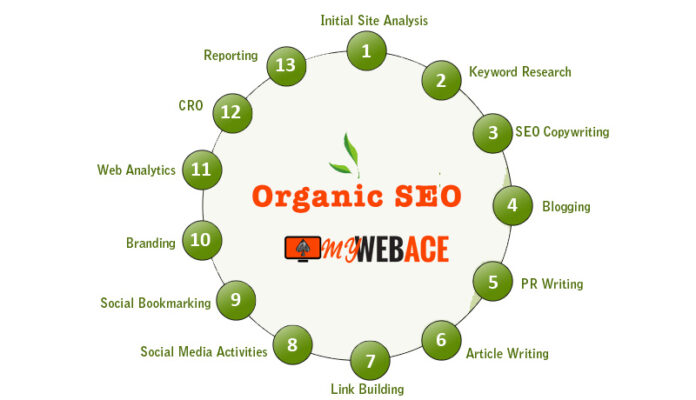5-Step Organic SEO Strategy for Enhanced Rankings in SERPs?
Now that we’ve clarified the concept of organic SEO, you might be wondering how to transform this knowledge into an effective strategy for your business. Let’s explore a five-step organic SEO strategy sure to earn Google’s approval, also serving as a set of valuable organic SEO best practices.
Step 1: Conduct Thorough Keyword Research
Keyword research is a cornerstone of SEO in digital marketing, forming the basis of effective organic SEO strategies. Using tools like keywordtool.io, begin by identifying valuable keywords related to your business and industry. Start with keywords pertinent to your products or services.
From there, you can explore variations of these keywords, including search volumes, competition levels, and cost-per-click values. Ideally, opt for keywords with high monthly search volumes and low competition—this is the recipe for effective keywords.
When selecting keywords, consider a mix of short-tail and long-tail keywords. Short-tail keywords, like “ice cream cake,” are broader, while long-tail keywords, such as “chocolate chip hand-dipped ice cream,” are more specific.
If you operate an ice cream parlour, targeting the keyword “ice cream cake” would prove challenging due to intense competition. However, focusing on the long-tail keyword “chocolate chip hand-dipped ice cream” offers a better chance of ranking since it’s less competitive.
Step 2: Create Targeted Content
Once you’ve compiled a list of keywords to target your audience effectively, it’s time to embark on content creation. Google rewards informative and valuable content with higher organic rankings, so it’s vital to deliver content that meets these criteria.
Consider employing various content types to target your chosen keywords. Options include maintaining a blog, which allows for a consistent stream of fresh content—a preference of Google’s. You can also opt for long-form content exceeding 2000 words, which demonstrates expertise in a given topic.
Regardless of the content format, your primary objective should be providing the best possible information to users regarding your target keywords.
Step 3: Incorporate Multimedia Elements
Multimedia elements, such as images, infographics, and videos, should be integrated into your content. While seemingly minor, these elements offer substantial benefits.
They break up lengthy blocks of text, keeping users engaged on your page. Importantly, multimedia can enhance your site’s dwell time—the duration users spend on your website—a crucial factor in Google’s ranking algorithm.
Keeping users on your site for extended periods contributes to overall dwell time, ultimately boosting your search rankings.
Step 4: Enhance Page Speed
Page speed is a pivotal ranking factor for Google, reflecting the search engine’s commitment to delivering the best user experience. More than half of search engine users, precisely 53%, will exit a website if it takes longer than three seconds to load—a common occurrence in today’s digital landscape.
To address this, consider implementing these organic SEO tips to improve your page speed:
- Compress Images: Large images, while visually appealing, can hinder page speed. Tools like Kraken.io can compress images while maintaining quality.
- Reduce Redirects: Excessive redirects can slow down page speed, as the server needs to navigate multiple pages. Minimising redirects can enhance your site’s performance.
- Enable Browser Caching: Browser caching stores website resources on visitors’ local devices, saving loading time by recalling stored resources instead of downloading them again.
These strategies contribute to faster page loading times, reducing bounce rates and improving user experience.
Step 5: Optimise Internal Linking
Establishing a robust internal linking structure on your website enhances Google’s ability to crawl your site efficiently. Google’s search bots rely on crawling to understand your content, including targeted keywords and image context.
Facilitating the discovery and crawling of all your site pages is vital. You can achieve this by incorporating links to other pages within your content. For instance, when discussing a service on one page, link to a relevant blog post. Likewise, link to a product page from your blog.
To meet organic SEO best practices, ensure that all your site pages are interlinked and accessible within at least three pages of your website. Additionally, consider the hierarchical structure of your site pages when establishing internal links.
This comprehensive approach to organic SEO sets the stage for improved rankings in SERPs, offering a set of effective organic SEO London best practices.


